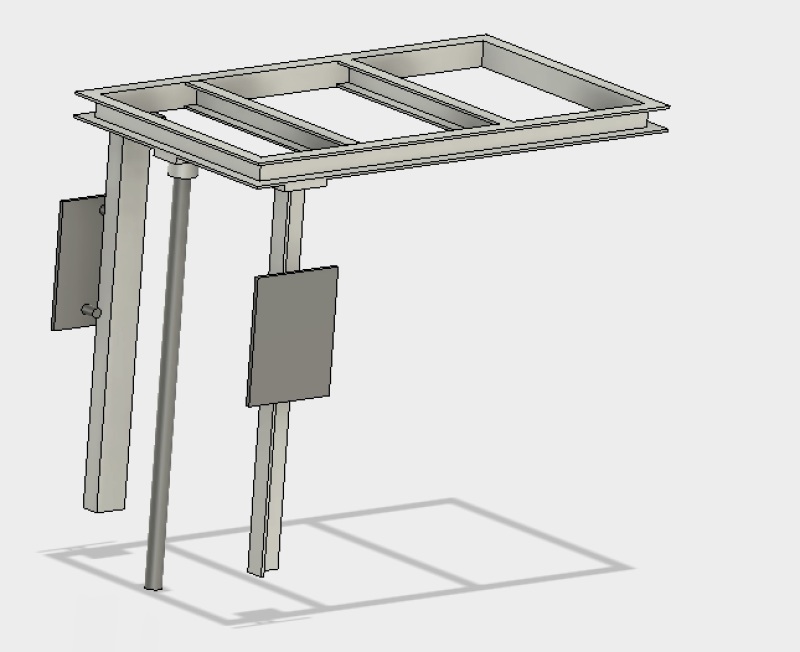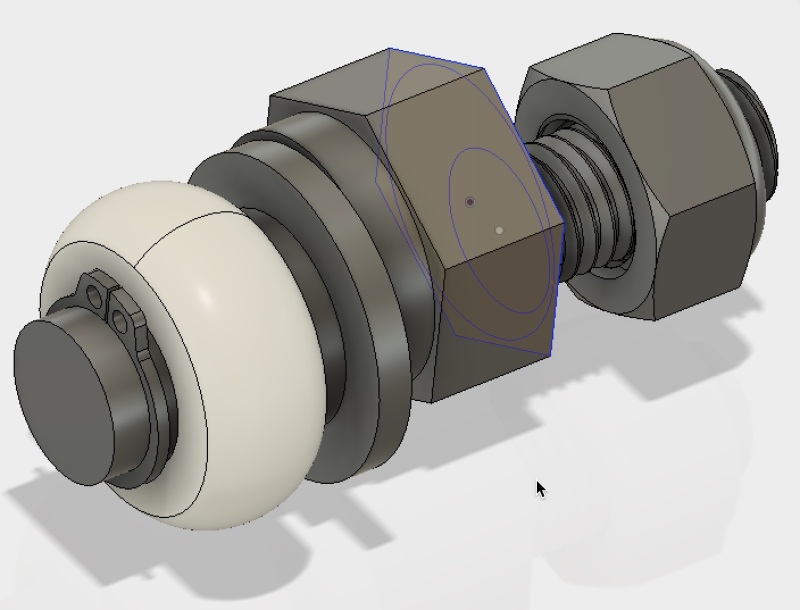learningallthetime
New member
- Jul 10, 2016
- 16


I've been happily working on a platform design as above (500mm long, 350mm wide, vertical angle-irons 450mm long; cylinder represents linear actuator). The purpose is to provide 300mm of vertical motion and carry a load up to 20kg (that could even be placed at the far end).
The rollers are mounted on a bolt with a flange, then washer, then cam nut, such that the platform can be aligned, compensating for any distortions in the welded frames of the support (not shown) and the platform itself. Have built one prototype and it all seems to work quite well. Still need to add some blocks to provide lateral stability.
A friend took one look at all this and said I should use linear guideways (such as Hiwin HG series). They are not cheap but he insists it will be cheaper than machining all the relevant components to make my setup work.
I had the impression that I was designing something pleasingly simple that would deal with the load whilst providing adequate stability; that ultimately it should be a cost effective approach.
So my natural reaction is to start thinking how to cut lots of plates with 20mm holes (for the cam nuts) efficiently, how to mill the nuts without finishing passes to do so fast, how to turn the bolts quickly etc. and so forth. Is it just obvious that my friend is right and should go with prebuilt linear guideways?
Would anyone like to chime in on this matter?
